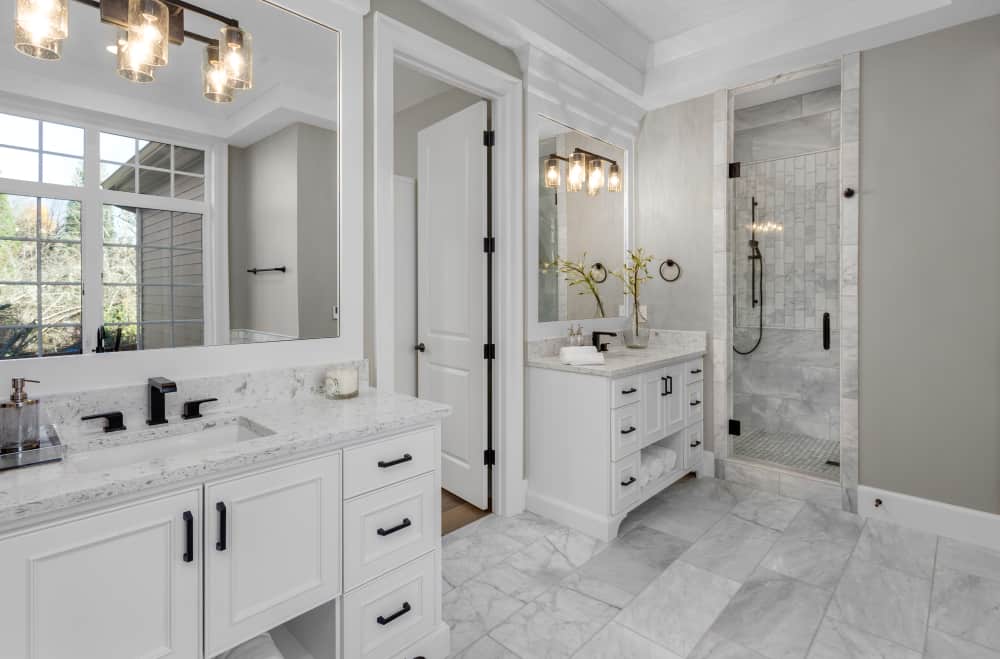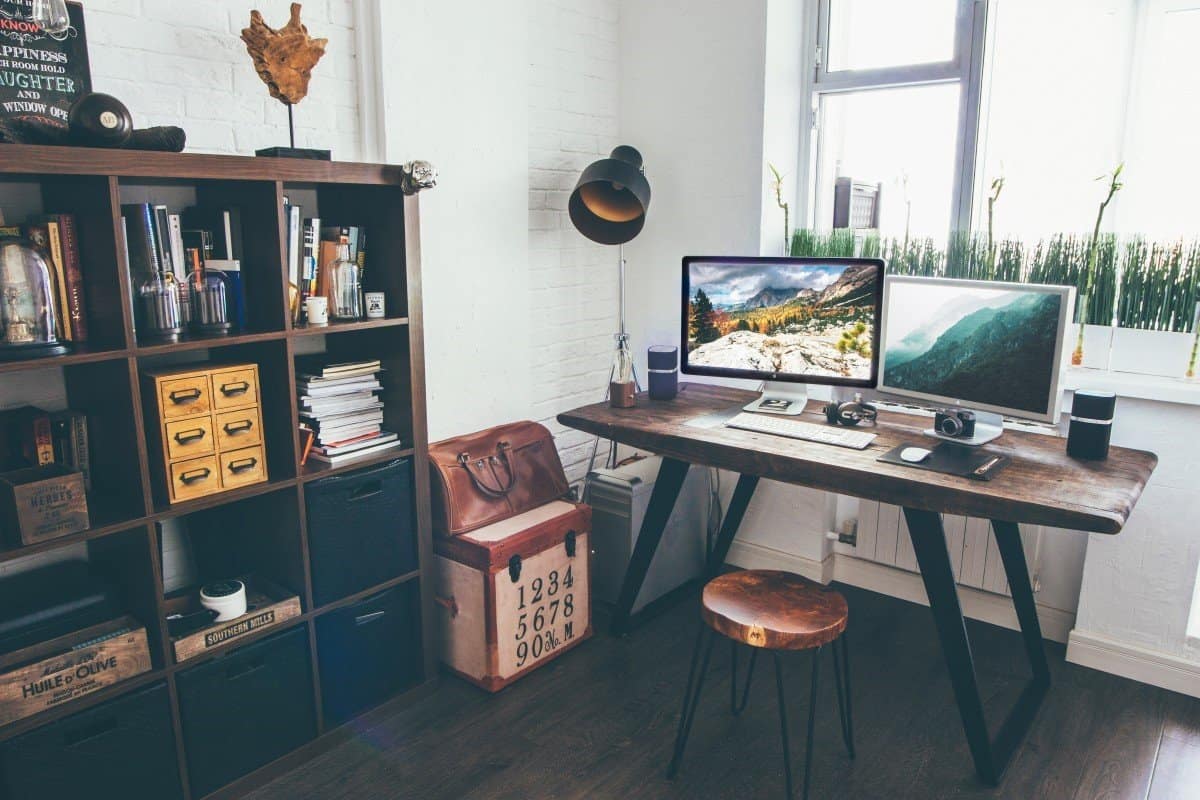How Do You Organize Your Home For Maximum Productivity?
Working from home means that you have full control of how your workspace is set up, the desk and cabinets you use, and where you place them. Whether your home office is a designated room or just a laptop at a table, there are steps you can take to ensure you get the most out of your workspace.
Just because most of your work is done on a PC or a laptop doesn’t mean you should neglect your physical workspace. Ensuring that there is a place for everything means you won’t waste valuable time looking for things.
Staying organized can be as simple as using a cup to store your pens or elaborate as an alphabetized filing cabinet. It helps to periodically go through your things and get rid of what you don’t need.
Losing something becomes much easier when clutter starts to pile up. Folders and binders are a great way of keeping track of important documents, and a few sticky notes can go a long way.
How Should I Set My Desk for Productivity?
Perhaps the most important part of your home office is your desk. It is essential to have what you need within arm’s reach, so you can spend more time working and less time walking around trying to find stuff.
An easy way to remember where things are is to place them in the same area every time.
Have a calculator on your desk? Place it on the same side every time.
Have a notebook or calendar at your desk? Set it on the other side; that way, your muscle memory will form and help you to quickly grab what you need.
It is important to ensure that your desk is at a good height for you to comfortably use. If your screen is too close or too far, after a few hours your eyes will tire. By having the desk where you want it, you can prevent strain on your eyes, back, and neck.
Divide Workspace from Personal Space
Worrying about work before or after your workday is a common problem for many. Some people find themselves working entirely from home, meaning there is no longer a physical separation between your professional and personal life.
Something as simple as closing a door can help put you in a “work” mindset. A brief walk or break can help disrupt the monotony of sitting in front of a computer screen. Another way to separate work from your home life is to have a designated room devoted to work. When working from home, there is no leaving the office building for the day.

This creates a place you can walk away from at the end of your workday.
Have a Routine and Schedule
Working at home can be very convenient. It can also make you complacent. Since it is so easy to turn on your computer and start your day, the habit of getting up later and later can form.
Waking up a little before you have to work gives you time to clear your head, relax, and do some pre-work preparation.
Working from home makes it easier to work late; however, it can also be harder to “leave” work.
It is important to set a “clock out time” for your workday and try to stick to it. Staying late is a reality of many offices, although it’s easy to lose track of time when you have no commute. It can be great to work in a comfortable home office, the temptation to work later or check on something after your workday ends can make work seem omnipresent.
If possible, try to make your lunch break work-free. The same goes for when you “leave” work at the end of the day. A strict schedule can also help reduce the temptation to get distracted or slack off.
Space Saving Desk
Since the majority of work done from home is performed primarily on computers, a large half-room desk isn’t a necessity for most workers. A space saver desk will have enough room for a computer and notebooks while still giving you space for other things.
Another benefit of the space saver desk is making your workspace feel more like home and less like work. With less space to work with, a space saver desk can motivate you to stay organized; with it, there is only enough room for essentials.
This forces a person to choose what they need and can help prevent clutter.
How Do I Create a Productive Workspace at Home?
Making a Few Changes Can Get Your Home Office Working For You
If you haven’t already, you might want to get comfortable with your home office. Remote work isn’t going away anytime soon, with hybrid work schedules looking to become the norm. Now is the perfect chance to review your space and consider how your home office layout is helping or hindering you.
Everybody has a different idea of organization and productivity, but here are a few concepts that can help anybody turn their home office into a stress-free, effective workspace.
1.) Think Vertical
One of the biggest detractors from the work-from-home experience is that your home now doubles as office storage and supply space. Even as we shift more content to the cloud, it’s impossible to fully eliminate the need for hard copies, and nothing seems to pile up faster than loose documents.
No matter how digital we become, we all still need supplies like pens, paperclips, or stamps.
But instead of investing in a drab file cabinet that takes up valuable floor space, use your walls, doors, and creativity to your advantage.
Floating shelves and honeycomb shelves are trendy solutions and can also hold small houseplants or photos to help brighten up your space.
Cork boards make for perfect places to pin up pertinent papers. Over-the-door hanging baskets can organize both documents and supplies.
Pegboards are available at most hardware stores and can make for a customizable supply organizer. Under-desk baskets can keep necessities close by while keeping them off your desk space. No matter which storage option you choose, all provide a greater degree of flexibility and individuality than any floor-based storage option.
2.) Don’t Break the Bank
Creating a productive workspace doesn’t mean spending money on all new furnishings. There are plenty of inexpensive(if not free), solutions to organizing your home office. Upcycle old jars to store receipts, pens, or any other small supplies. Instead of pitching that shipping box, use it as a temporary storage solution or a makeshift monitor stand.
Depending on how “DIY” you’re feeling, you could even construct your shelving and storage with minimal tools and some elbow grease. Building your home office not only cuts down on costs but also provides a sense of individuality to your space. If you’re proud of what you built, you’ll enjoy spending your time around it!
3.) Keep It Clean
Keeping your home workspace clean can not only be beneficial to your productivity but can also decrease stress levels. Having stacks of unorganized papers or a haphazard mess in front of you can be distracting during Zoom presentations, and having them behind you can look unprofessional when you’re the one speaking.
Beyond that, having a clean and organized space can help boost your productivity. If you take 10 minutes every Monday to clean, dust and organize, you’ll set yourself up for success every week.
4.) Clear Away Cables
You may not notice how many cables are snaking across your floor until you’ve got your computer, monitor, phone charger, video conferencing camera, speaker, and desk lamp all plugged in at the same time. The most inexpensive solution is using some leftover binder clips or zip ties to organize the cables.
If you’re interested in upgrading some of your equipment, you might want to invest in some wireless options. Upgrading to a wireless keyboard, mouse, or monitor can help cut down on your cables.
Bluetooth speakers and cameras are available at a variety of price points, and you can place their charging ports in another part of the room.
How Do You Organize a Home Office?
How do you put all of it together?
First, you want to choose exactly where your workspace will go. Low-traffic areas of your home or apartment cut down on distractions. Your space doesn’t have to be large either, just big enough to fit your desk.
Collapsible desks can be great choices if floor space is at a premium in your home.
You might also want to consider splitting up your workspace between a desk and a spare closet where you can store supplies, files, or your printer. Speaking of your printer, try to find a spot that can make use of multiple nearby outlets.

While surge protectors and power strips are convenient, it can be very frustrating when your entire workstation shuts off due to an interruption of electricity.
Now that you’ve got your space laid out, consider your workflow. What items or files are you going to use multiple times a day and which ones can be stored somewhere else until they’re needed? While getting up multiple times a day to get something you stored in your closet or another room won’t seem that inconvenient, that time will add up and offer more chances to be distracted.
You might also want to consider the “mobility” of your workspace. If you need to move your workspace to another area, can you fit everything you need in a backpack or messenger bag?
While this may not be advisable for everyone, some may appreciate the flexibility while trying to find the most productive spot in their home.
There are lots of great ways to optimize your home office for maximum productivity, and everyone will have different needs. By using these concepts to organize your space, you can increase your efficiency, decrease your stress, and turn your home office from a bummer to a luxury!










